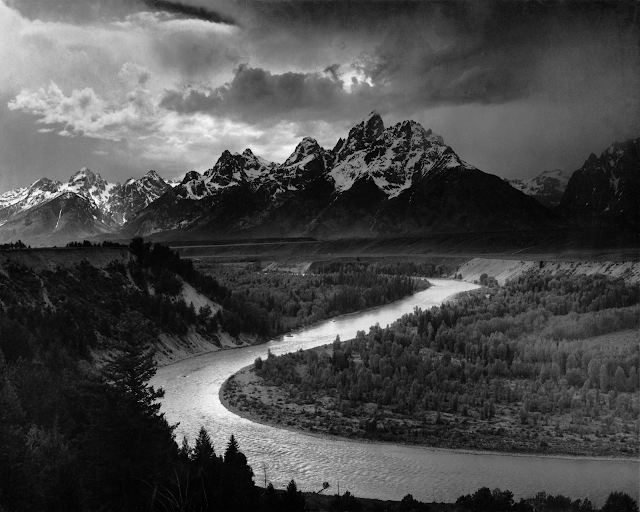I have always considered art photography a beautiful and mysterious means of expression. It's biggest problem is that unlike many other forms of Art, photograph is often used for a wide variety of purposes, so the pure Art does get lost, tossed and mixed up in advertising, self promotion, and a host of other things. This is not necessary bad, but simply only a product of it's success. When a painter selects his/her subject, sketches are made and vistas can be arranged and rearranged to suit the all important composition. A photographer does not have that luxury. When Ansel Adams (1902-1984) took this photo he didn't just reach in his pocket and whip out his phone. I have no idea how far he walked to see this landscape, but realize, it was necessary for him to set up a tripod, connect the large, heavy viewfinder camera to it, determine the correct camera settings, and then wait for the natural lighting...




.jpg)
